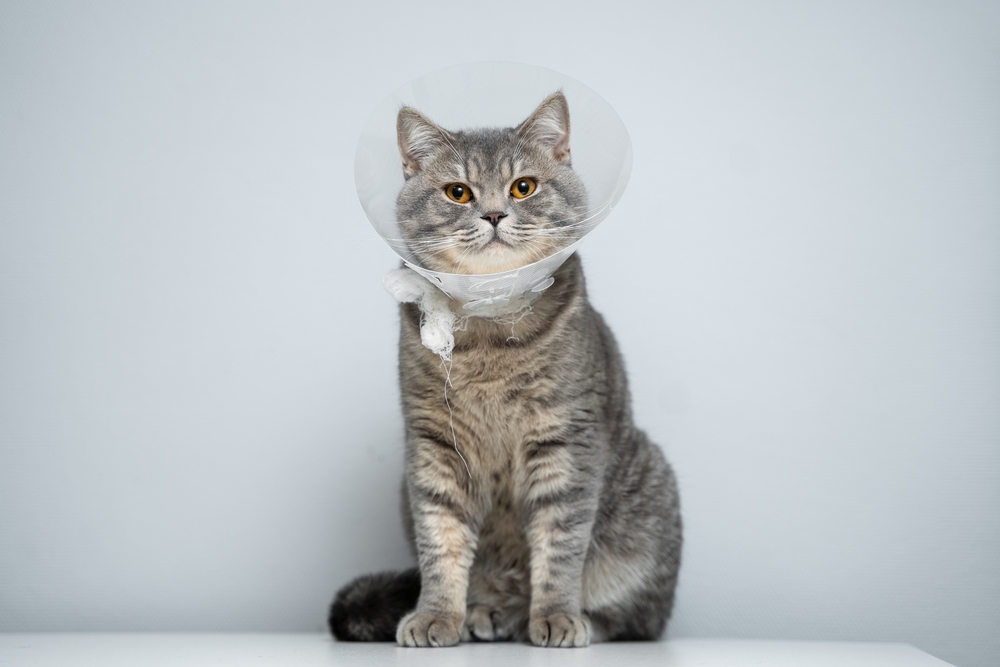Many people believe the main benefit of spaying and neutering cats and dogs is population control and, while that is certainly an important factor, these procedures provide many other advantages. Learn about the physical and behavioral benefits that contribute to a longer, healthier, and happier life for your pet who has been spayed or neutered.
Physical benefits provided by spaying and neutering pets
A spay or neuter procedure, which is the removal of reproductive organs, affords pets numerous physical advantages that can greatly improve their health, longevity, and overall quality of life. Our Memorial Villages Animal Hospital team explains some of the key physical benefits offered by spaying and neutering.
Prevention of reproductive-related health issues in pets
Spaying and neutering provide comprehensive protection against a range of reproductive-related health issues, safeguarding a pet’s long-term well-being.
When a female pet is spayed, their ovaries and uterus are removed, effectively eliminating the risk of pyometra, a potentially life-threatening condition characterized by pus accumulation in the uterus. Pyometra typically occurs in older, unspayed females after a heat cycle and can lead to systemic infection (i.e., septicemia) if left untreated. Additionally, spaying significantly reduces the incidence of mammary gland tumors, especially if performed before the first heat cycle. While 50% of mammary tumors in female dogs are benign, that rate drastically drops for female cats, with only 10% of mammary tumors classified as benign and 90% as malignant and potentially deadly.
When a male pet is neutered, the testicles are removed, eliminating their source of testosterone production. Neutering helps prevent testicular cancer, a relatively common malignancy in unaltered male dogs. Moreover, neutering reduces the risk of benign prostatic hyperplasia (i.e., prostate gland enlargement) and prostatitis (i.e., prostate inflammation), which can cause discomfort and urinary problems in older intact males. Additionally, neutering can mitigate the risk of perianal tumors, which are more prevalent in unneutered dogs.
While spaying and neutering can be performed at any age, considerations to maximize health benefits include optimal timing. For females, spaying before the first heat cycle provides the most protection against mammary tumors and eliminates pyometra risk. For males, early neutering before sexual maturity reduces the likelihood they will develop certain behavioral issues and may confer additional health benefits, such as a reduced risk of certain cancers and prostatic disorders. However, large-breed dogs may need to delay spaying and neutering to protect them from certain conditions. Consult our team about what age is best to spay or neuter your furry pal.
Reduction in pets’ roaming behavior
Unaltered pets often have strong instincts to roam in search of a mate, which can expose them to numerous hazards, including traffic accidents, fights with other animals, and getting lost. Spaying and neutering diminish this roaming urge, keeping pets safely at home and reducing the risk of accidents and injuries.
Longevity enhancement for pets
Studies have shown that spayed and neutered pets live longer than unaltered pets. Because the procedures eliminate the risk of certain cancers and reproductive diseases, they contribute to a longer, healthier lifespan, and cats and dogs can enjoy more quality time with their families.
Behavioral benefits provided by spaying and neutering pets

Spaying and neutering provide not only a myriad of physical benefits but also a host of behavioral benefits, including:
- Aggression reduction — Hormones play a significant role in influencing pet behavior. Unaltered male dogs, in particular, often display aggressive tendencies, especially toward other animals and people, because their behavior is testosterone-driven. Neutering reduces testosterone production, resulting in a calmer, less aggressive demeanor. Similarly, spaying female pets can minimize territorial aggression. In cats, behaviors like yowling are prevented.
- Mitigation of urine marking and spraying — Urine marking is a common behavioral issue among unaltered pets, particularly males. Neutering significantly reduces the urge to mark territory by lowering testosterone levels, so your indoor environments are odor-free and more pleasant. Spaying female cats also eliminates the instinct to spray urine, sparing pet owners from the frustration of dealing with unwanted odors and stains.
- Prevention of unwanted litters — One of the most significant benefits of spaying and neutering is the prevention of unwanted litters. The pet overpopulation crisis results in the euthanization of millions of homeless cats and dogs in shelters each year. By spaying and neutering our pets, we play a vital role in reducing the number of animals entering shelters and contribute to efforts aimed at finding loving homes for those already in need.
If you are unsure about the best age for your pet’s spay or neuter, or to schedule their procedure, contact our Memorial Villages Animal Hospital team. Also, ask about our May promotion that offers a discount on spay or neuter surgeries!









Leave A Comment